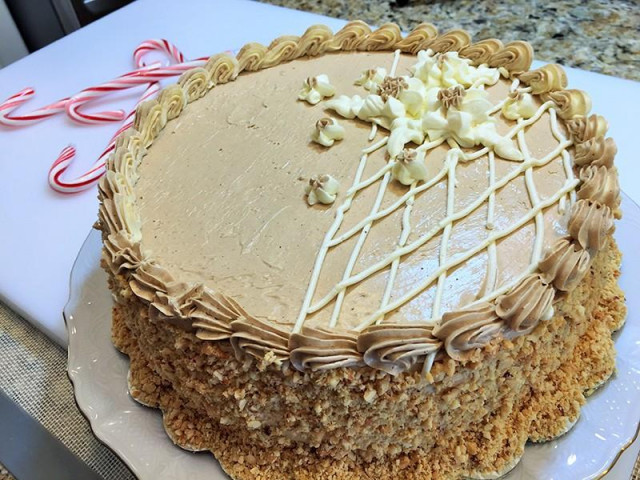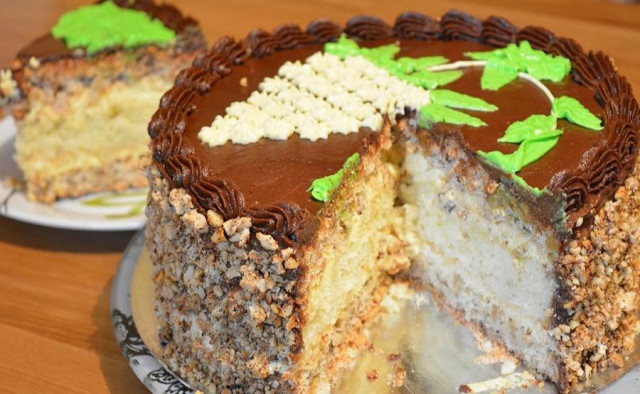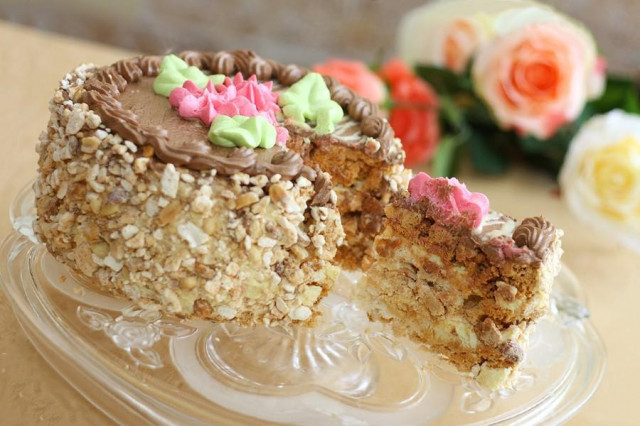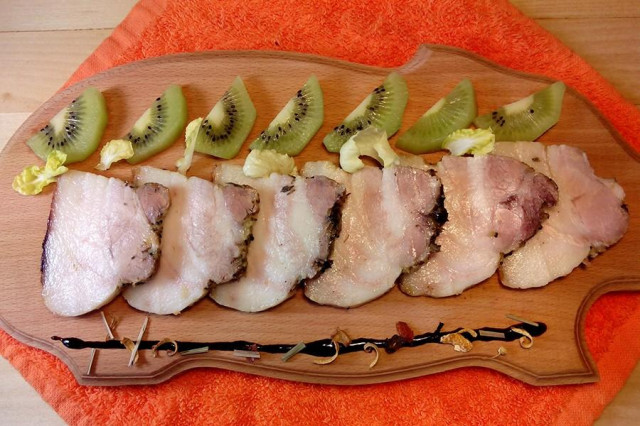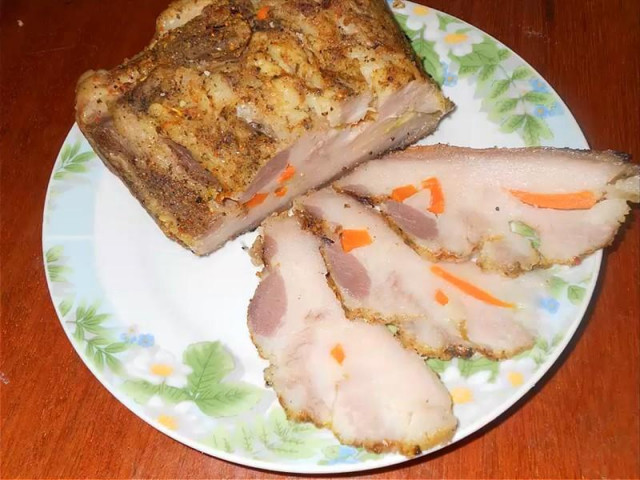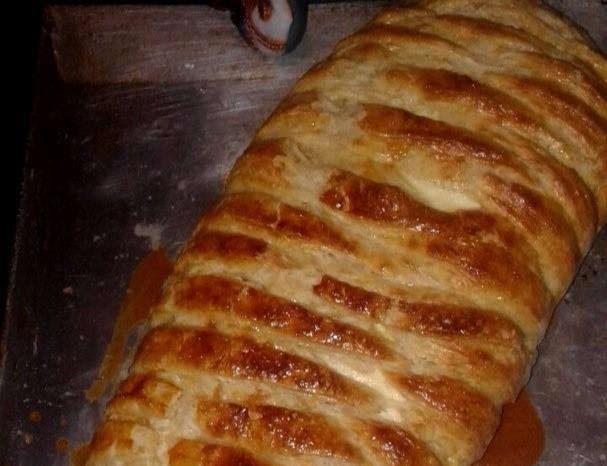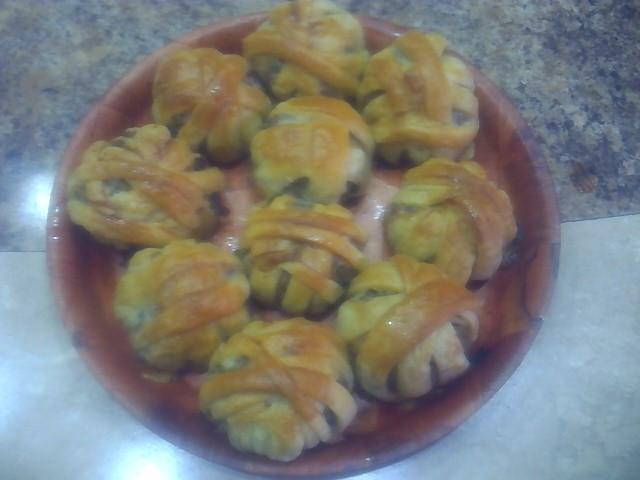Composition / ingredients
Cooking method
Cooking meringue:
1. Whisk the proteins with sugar, add the chopped nuts and gently mix the mass.
2. We put the mass into a mold and bake the meringue for two and a half hours at a temperature of 160 degrees. You can bake the cakes for the first 15-20 minutes at a temperature of 170 degrees, and then reduce to 150-160 degrees and bake for about two hours until ready. Ideally, leave the cakes to cool directly in the oven, slightly opening the door (so they dry well).
Next, make the cakes:
3. Rub the butter with flour and baking powder.
4. Rub the yolks with sugar, combine with flour and knead with sour cream.
5. The resulting dough is divided into two cakes and baked for ten minutes at a temperature of two hundred degrees.
Now we prepare the cream:
6. Half of the milk is brought to a boil, and the second is whipped with flour and poured into boiling milk.
7. Stirring continuously, bring the cream to a boil again, remove from heat and thoroughly whisk it. Cover the finished cream and let it cool.
8. Beat the butter with powdered sugar and vanilla sugar until fluffy.
9. The cooled cream is whipped and combined with the oil mass and whipped again.
Putting together a cake:
10. The first in the assembly of the cake is the shortbread. Lubricate it with cream.
11. We put the meringue cake on top and lubricate it with cream too.
12. And the final third cake is sand again.
13. Top and sides with cream. The sides can be decorated with meringue pieces, sand crumbs and almond chips.
Bon appetit!
Keep in mind that everyone's ovens are different. The temperature and cooking time may differ from those specified in the recipe. To make any baked dish successful, use useful information in the article about ovens here
Be prepared for the fact that flour may need more or less than indicated in the recipe. You need to focus on how the dough should turn out (dense, soft, liquid, etc.). A lot of useful information about why flour of the same variety may have different properties, read this article
Caloric content of the products possible in the composition of the dish
- Whole cow's milk - 68 kcal/100g
- Milk 3.5% fat content - 64 kcal/100g
- Milk 3.2% fat content - 60 kcal/100g
- Milk 1.5% fat content - 47 kcal/100g
- Concentrated milk 7.5% fat content - 140 kcal/100g
- Milk 2.5% fat content - 54 kcal/100g
- Sour cream with 30% fat content - 340 kcal/100g
- Sour cream of 25 % fat content - 284 kcal/100g
- Sour cream with 20 % fat content - 210 kcal/100g
- Sour cream of 10 % fat content - 115 kcal/100g
- Sour cream - 210 kcal/100g
- Walnuts - 650 kcal/100g
- Black Walnut English Walnut - 628 kcal/100g
- Black Persian Walnut - 651 kcal/100g
- Walnut oil - 925 kcal/100g
- Whole durum wheat flour fortified - 333 kcal/100g
- Whole durum wheat flour, universal - 364 kcal/100g
- Flour krupchatka - 348 kcal/100g
- Flour - 325 kcal/100g
- Granulated sugar - 398 kcal/100g
- Sugar - 398 kcal/100g
- Butter 82% - 734 kcal/100g
- Amateur unsalted butter - 709 kcal/100g
- Unsalted peasant butter - 661 kcal/100g
- Peasant salted butter - 652 kcal/100g
- Melted butter - 869 kcal/100g
- Baking powder - 79 kcal/100g
- Egg yolks - 352 kcal/100g
- Powdered sugar - 374 kcal/100g
- Vanilla sugar - 379 kcal/100g
- Egg whites - 44 kcal/100g

